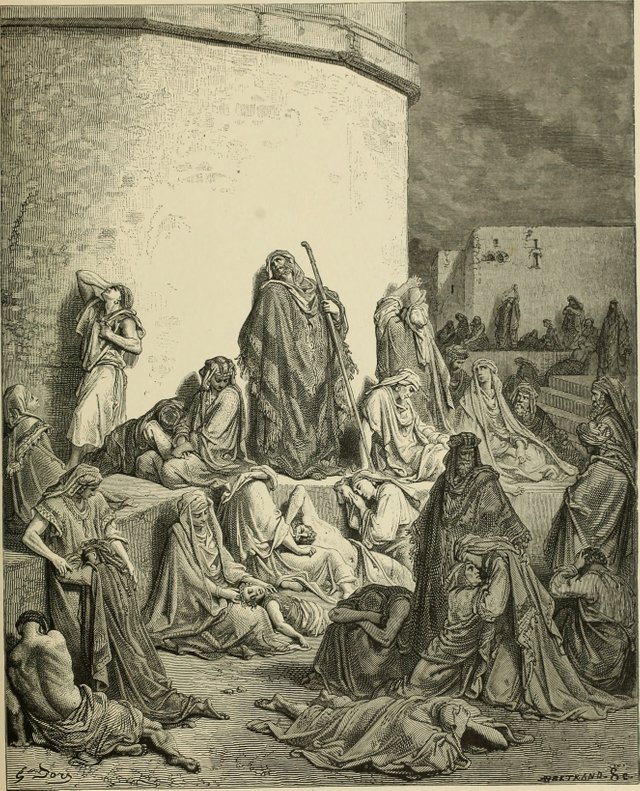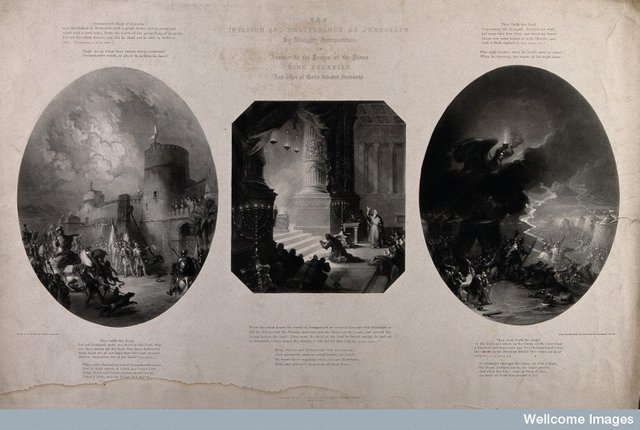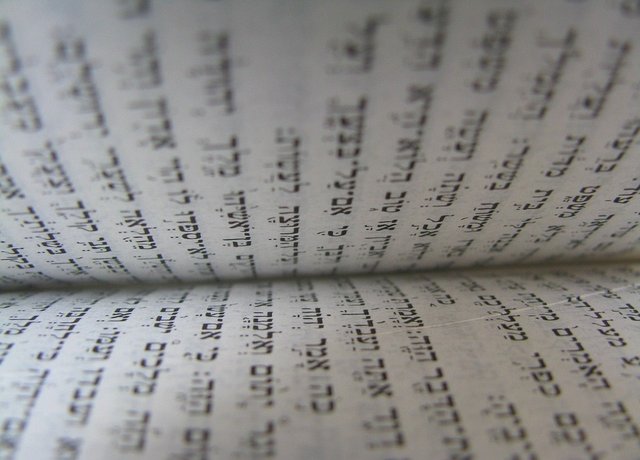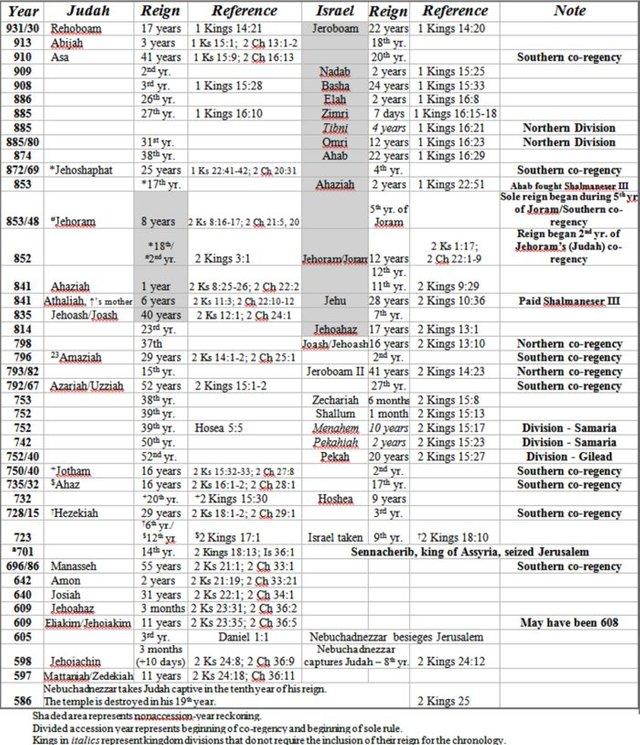Chronology of the Kings of Israel and Judah - Conclusion, Reflection and Bibliography
Leslie McFall makes an interesting observation in his Bibliotheca Sacra article, “Did Thiele Overlook Hezekiah’s Coregency?”

Second Kings 15:30 marks Hoshea’s accession and 2 Kings 17:1 marks the end of his reign. Thiele understood מָלַךּ in 2 Kings 17:1 as “began to reign,” as the Revised Standard Version has consistently translated it 10 times out of 12 for Israel’s kings, and 12 times out of 13 occurrences for Judah’s kings. In three cases the RSV has translated it “reigned” (1 Kings 14:21; 16:15 ; 2 Kings 15:8). However, in the case of Judah’s kings there is a longer list of circumstances attached to the notice of accession in which a second מָלַךּ is used of the duration of each king’s reign. The RSV consistently translates this second מָלַךּ as “he reigned” (19 occurrences). This second מָלַךּ has been omitted for all Israel’s kings, but the RSV has unnecessarily introduced it in every instance to sum up each king’s reign, and it has done so in the case under review, namely, “In the twelfth year of Ahaz king of Judah, Hoshea son of Elah began to reign [מָלַךּ] in Samaria over Israel, and he reigned [no verb in Hebrew text] nine years.” This verse should have been translated, “In the twelfth year of Ahaz [Ahaz’ coregency] king of Judah, Hoshea the son of Elah reigned in Samaria over Israel nine years.” Thus the 12th year of Ahaz’ coregency—723 B.C.—marked the end of Hoshea’s nine-year reign, not its beginning.[1]
If we explore this avenue, some of our numbers begin to make sense. For instance, we no longer have a struggle with Hoshea succeeding in the 12th year of Ahaz, for it works out perfectly for His reign to end with the siege of Samaria in 723, exactly 12 years after Ahaz assumed his father’s throne. Hezekiah would then have been co-regent from 728 to 715, beginning his sole reign from then until his co-regency with his son, Manasseh, in 696. He lived another ten years, leaving Manasseh as the sole ruler of Judah in 686. This would result in a total rule of 42 years, but his 29 years began with his sole reign in 715. This also reconciles 14 years represented in both 2 Kings 18:13 and Isaiah 36:1 as the time between Hezekiah’s succession and Sennacherib’s siege of Jerusalem (715-701), without discrediting the copyist of 2 Kings, thereby leaving the text as it stands.

By The Welcome Trust Limited, Gallery
In dealing with a challenge that at first seems nigh impossible, we have now come to three possible conclusions. We are all greatly indebted to Thiele’s exhaustive work in this area, without which we may still be scratching our heads and wondering how this could possibly be solved. His research has given us the missing pieces to help us to understand how the chronologies of the Kings of Israel and Judah could be reconciled. Archer’s short attention to Thiele’s work and his contribution did not relieve all the tension, but it did help us to think outside our box.
Finally, with the contribution of McFall, we seem to have put together a chronology that satisfies both secular and biblical testimony, without ascribing any tension to recording errors or miscalculations. Can we be certain that our conclusions are correct? Of course not. Again, we are so far removed from the sources that it seems almost inevitable that we will make errors. What is important is that, through such research, our confidence in the veracity of God’s Holy Scriptures is bolstered, strengthening our faith and giving more substance to our testimony as we continue to preach the Word to afflicted people in a fallen world.

Pixabay
As this article concludes the words of Archer are fitting:
I would like to point out the grave consequences of espousing a theory of non-inerrant Scripture. If indeed there are errors to be found in the Bible record which still remain after careful, objective exegesis of the text, the only possible recourse would have to be a judgment passed upon this error that would necessitate a competent critic who is somehow better informed as to the truth than was the author of Holy Scripture Himself. … this results in setting a human judgment over what purports to be the Word of God. If an error in the autograph can be conclusively proven in one passage, it opens up the possibility of error in other passages as well. The subjective preference of the modern critic may intervene at this point, and essentially the Bible is demoted to the status of any other human-composed book on religions—a combination of truth and error that demands an inerrant critic to discern between what is wrong and what is right—one who is wiser and better informed than the original prophet or apostle who composed the book in question. Thus the modern scholar becomes an arbiter of truth on a superior level to those whom God allegedly inspired. It then follows that the text of theological truth rests upon the infallibility of the present-day savant. And unhappily, such savants have been known to disagree with one another, and so there is no positive certainty possible to know what was really contained in the text or even whether it spoke the truth. Thus the initial spot of cancer tends to spread throughout the rest of the body, as it were, and the seeker is ultimately left to his own opinion rather than resting on the certainty of an objective revelation from God, a God who really cares about man and who has made provision for him to be saved from his guilty, fallen condition. The end result is apt to be a resignation to agnosticism which leads to a feeling of personal meaninglessness and despair, similar to that of H. G. Wells in “The Mind at the End of its Tether” or the final reproach against Nature or the Universe which came from the pen of Bertrand Russell. The honored savant who has bet his life on the verity of Liberalism goes out into the night that awaits him, unforgiven and unrepentant, to face his Maker and a divine judgment which lies beyond the competence of man to alter or to mitigate.[2]

Personal Reflections
In closing, I want to express my gratitude to God for the opportunity to study this subject. When I first started attempting to document and reconcile the dates found in His Word, I was simply overwhelmed. Relying heavily on Thiele’s work, the dates began to come together, and I became more encouraged. However, as the dates were being finalized I began to realize that I was not able to reconcile all the dates in the eighth century. I admit that I became disillusioned and, contrary to my convictions and presuppositions, began to question whether it was possible, and whether the text we had was indeed accurate. As Andrew Steinmann asserts, I began to wonder if there were a scribal error or emendation (see Bibliography).
Leslie McFall’s exhaustive work in this area as recorded in his Bibliotheca Sacra articles (see Bibliography – they have been updated in more recent works) not only showed how the text could be reconciled but how neatly it all fit together. Other works consulted simply affirmed the conclusions I was coming to, bolstering my confidence in the possibility of coming to an accurate conclusion that was consistent both within the biblical record and other historical documentation.
At last, when the varied pieces of the puzzle were brought together, considering all the possibilities before me, a chronological composition was achieved that, while admittedly is probably not 100% accurate, is entirely feasible and most likely very close to the actual timeline of events. Most importantly, and what I am most grateful for, is that the end result is a strengthening of my confidence in the verity and perspicuity of God’s Holy Scriptures. Praise God for His patience and tender care for those who would know Him and His Word.
My gratitude goes to those who have read this series and encouraged me along the way. I realize some of you do not embrace the Bible as truth, but love history anyway and recognize its value in such studies. For others this will be a source of assurance for what they already hold as true and precious.
Steemin' on,
Another Joe

Email notifications
AJ Facebook
AJ Twitter
[1] Leslie McFall, “Did Thiele Overlook Hezekiah’s Coregency?,” Bibliotheca Sacra 146/584 (Oct 1989): 397.
[2] Archer, Survey of Old Testament, 580-81.
[23](796 BC, in the Table) Amaziah lived 15 years after the death of Jehoash of Israel (2 Kgs 14:17; 2 Chr 25:25).
~ Introduction - Part 1 - Part 2 - Part 3 - Part 4 - Part 5 ~
Archer, Gleason Leonard. A Survey of Old Testament Introduction. Chicago: Moody Press, 1994.
________. Encyclopedia of Bible Difficulties. Grand Rapids, Mich.: Zondervan Pub. House, 1982.
Baker, David W., and Bill T. Arnold, eds. The Face of Old Testament Studies: A Survey of Contemporary Approaches. Grand Rapids, Mich.: Baker Books, 1999.
Carson, D. A. New Bible Commentary: 21st Century Edition. Downers Grove, Ill.: Inter-Varsity Press, 1994.
Finegan, Jack. Handbook of Biblical Chronology; Principles of Time Reckoning in the Ancient World and Problems of Chronology in the Bible. Princeton, N.J: Princeton University Press, 1964.
House, Paul R. 1, 2 Kings. New American Commentary. Nashville, Tenn.: Broadman & Holman Publishers, 1995.
McFall, Leslie. “A Translation Guide to the Chronological Data in Kings and Chronicles.” Bibliotheca Sacra 148/589 (1991): 3-46.
__________. “Did Thiele Overlook Hezekiah’s Coregency?” Bibliotheca Sacra 146/584 (Oct 1989): 393-404.
__________. http://www.btinternet.com/~lmf12/. (Leslie McFall’s old home page – the new one can be found at https://lmf12.files.wordpress.com/2012/11/hebrew_revised_kings.pdf).
Na’aman, Nadav. “Historical and Chronological Notes on the Kingdoms of Israel and Judah in the Eighth Century B.C.” Vetus Testamentum 36/1 (1986): 71-92.
Payne, J. Barton. “The Relationship of the Reign of Ahaz to the Accession of Hezekiah.” Bibliotheca Sacra 126/501 (January 1969): 40-52.
Steinmann, Andrew E. “The Chronology of 2 Kings 15–18.” Journal of the Evangelical Theological Society 30/4 (Dec 1987): 391-97.
Strand, Kenneth A. “Thiele’s Biblical Chronology as a Corrective for Extrabiblical Dates.” Andrews University Seminary Studies 34/2 (Autumn 1996): 295-317.
Thiele, Edwin Richard. A Chronology of the Hebrew Kings. Contemporary Evangelical Perspectives. Grand Rapids : Zondervan Pub. House, 1977.
_________. The Mysterious Numbers of the Hebrew Kings. New rev. ed. Grand Rapids, Mich.: Kregel, 1994.
Thompson, J. A. 1, 2 Chronicles. New American Commentary. Nashville, Tenn.: Broadman & Holman Publishers, 1994.



Thank you for posting. If I may suggest; the work of a theological scholar of the Word of God from the original scriptures whose writings and sermons have been preserved can be found at rbthieme.org. He believed the Word of God in the original languages to be inerrant and is most masterful in his presentation of doctrinal truths. There are streaming samples available. His life's work is a feast for all who seek the truth. Cheers.
I agree with you. That's what the Chicago Statement on inerrancy states, which I embrace.
Thanks for the feedback.
Thank you for your reply and your series. Very interesting.
Truth one- establishment truth, Truth two- the gospel, Truth three- doctrinal truths.
Catagorical Thinking. It is an elephant, one bite at a time. Thank you for approaching this subject one bite at a time. Cheers
Great job - thanks for sharing this; and your personal reflections which perhaps matter much more!
Thank you! And thanks for sticking with me. :)
What a confusing area of history. Amazing that everything can be reconciled in the end.
It seems confusing for us, doesn't it? I wonder how folks in a thousand years will study our daylight savings time and wonder what we were thinking! :)